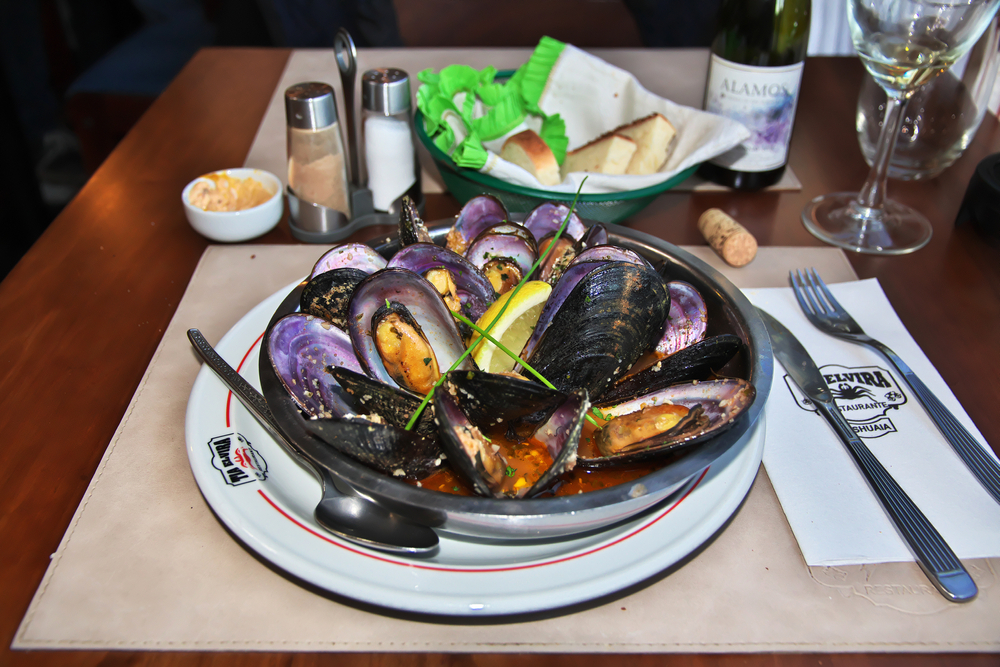Ushuaia, known as the city at the end of the world, is situated at the southern-most tip of Argentina and is famous for being the gateway to Antarctica. Most people make tracks to the far-flung city to join one of the cruises which sail across Drake Passage and explore the vast frozen continent. Even if you aren’t lucky enough to be taking a cruise, Ushuaia is worthy of a visit – as I recently discovered when I spent a few days based in the heart of the city.
Arriving at sunset, I was greeted by blustering winds and the sight of impressive snow-capped mountains in every direction I cast my eyes. I immediately knew that I was somewhere special. With its frontier town vibe and population of around 60,000, Ushuaia’s steep streets and mishmash of buildings overlook the port. A spectacular national park is situated a mere twenty minutes away by car or shuttle bus.
The windswept city is the capital of Tierra del Fuego (Land of Fire), an archipelago shared by both Argentina and Chile and one of the most remote areas of Patagonia. For overland travelers, many of whom have traversed the iconic Pan-American Highway, Ushuaia marks the end of the road. A variety of vehicles from heavy duty overland trucks to dust covered motorbikes can be seen parked up around town. Road-weary travelers mingle with cruise passengers on the streets of the city.
In addition to being set against such an alluring backdrop, Ushuaia has a fascinating history. For thousands of years, it was inhabited by indigenous people until British missionaries settled in the area. Sadly, many of the natives were wiped out due to disease or genocide. In 1889, a penal colony was established there, where criminals were kept in horrific conditions. These days, tourists can visit the oppressive, but atmospheric prison and learn about the grim lives of prisoners who were incarcerated there.

The main street of Avenida San Martin is lined with a hotchpotch of shops, restaurants and bars. The kitschy gift stores are fun to peruse and its worth checking out the quirky museums and colorful street art around town. For a one-stop souvenir shop, look no further than Monte Olivia which is crammed with everything from convict pyjamas to history books about the area.
If you have forgotten to bring hiking or camping gear, there are no shortage of outdoor shops for those last-minute purchases before heading into the wilderness. Anyone who is searching for something unique to take home as a keepsake should make a beeline for the Artisan Market located next to the port. A treasure trove of locally made crafts include jewelery, artwork and ceramics.

Dining options are plentiful in town and the choices here go beyond the ubiquitous Argentinian steak accompanied by a glass of malbec. Ushuaia is known for its freshly caught seafood, particularly the famous king crab. With its sublime views over the bay, Maria Lola is one of the best restaurants in which to sample local seafood delicacies. Don’t forget to try the local craft beer from the Beagle Brewery.
My first stop each morning was Tante Sara Café and Bar – the perfect place to kickstart the day with coffee and a hearty breakfast. Before setting off on a long hike or boat trip, I stuffed my daypack with tasty empanadas from La Marmita. With a wide variety of interesting fillings, both carnivores and vegetarians are well catered for, and they were the perfect ‘on the go’ snack.
Tierra del Fuego National Park is a magnificent landscape brimming with waterfalls, mountains, glaciers and lakes. There are trails galore to choose from and something suitable for all levels from rugged coastal tracks to more challenging ascending trails which reward with panoramic viewpoints. Bird watching opportunities abound and I was thrilled to hear, and then see, woodpeckers at close range on the Costera Trail. Taking the ‘convict’ train is a popular way to reach the park. The railway was built by prisoners to transport timber to be used for the construction of the prison. These days the train is a tourist attraction and an enjoyable way of taking in the sights of Tierra del Fuego.

Another highlight of a trip to Ushuaia is booking a boat trip along the Beagle Channel, the stretch of water which connects the Pacific and Atlantic Oceans. The tours pass the landmark of Les Eclaireurs lighthouse, before continuing to craggy islands where sea lions and cormorants can be viewed. On Martello Island, it’s possible to stroll amongst waddling Magellenic and Gentoo penguins who appear to be oblivious to their human visitors.
Even though my budget wouldn’t stretch to an Antarctic cruise, my trip to Ushuaia proved to be worth the effort. Before leaving the city, I couldn’t resist the temptation to have my photograph taken at the famous ‘fin del mundo’ sign located next to the harbor. After all, it’s not every day you find yourself at the end of the world.


